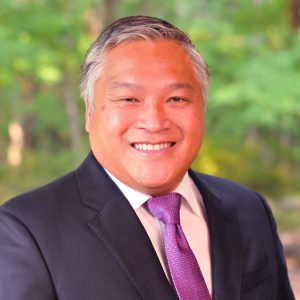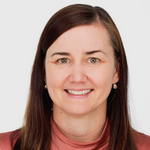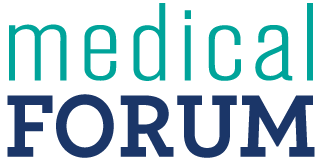Committee On Interprofessional Research, Education, And Ankyloglossia Science
CIREAS
Committee On Interprofessional Research, Education, And Ankyloglossia Science
CIREAS
Committee On Interprofessional Research, Education, And Ankyloglossia Science
CIREAS
Our Logo

At the center of the CIREAS logo is the ICAP logo, just as the mission and vision statements of this committee are to support and provide a scientific foundation or base for ICAP. The ICAP Logo symbolizes solidarity and harmony along with unity and culture in diversity. Orange represents energetic vibrancy and highlights the significance of our multidisciplinary approach to caring for our patients. Green represents compassion, kindness and nurturing qualities. Blue represents stability, harmony, responsibility and trust.
The colors of the rings surrounding the ICAP logo are gray and blue, symbolizing that research is not always black and white. The gray represents existing knowledge, and the blue represents vibrant new information. The overlap are areas of new and old information that require interpretation of clinicians and researchers alike. The circular design complements the colorful logo in the center, indicating that CIREAS and ICAP work together in complementary and supportive ways as we expand our knowledge outward to explore the field of ankylofrenula.
Our Purpose
CIREAS serves as a critical advisory and organizational body focused on advancing scientific research, education, and innovation within the field of ankyloglossia research. Our primary purpose is to assess, promote, and oversee research initiatives, ensuring they align with ICAP’s mission to improve healthcare outcomes. This committee often identifies emerging trends, prioritizes research needs, and recommends standards for clinical practices. The field of ankyloglossia research needs high-quality, well-designed scientific research to provide evidence and support for best clinical practices. CIREAS is attempting to raise the level of scientific rigor in the field through research-based advocacy activities and education. The range of activities may include special sessions at the annual conference, projects aimed at making research tools more accessible to clinicians, and organizing projects with multiple investigators and data collection projects. By fostering collaboration among researchers, healthcare providers, and industry stakeholders, we help bridge the gap between cutting-edge science and practical application, ultimately enhancing patient care and furthering the body of scientific evidence related to ankyloglossia.
Our Values
COMMITMENT TO DIVERSITY, EQUITY AND INCLUSION
There is strength in numbers and diversity. We aim to develop and sustain impactful partnerships with diverse stakeholder communities. We seek to establish truth, seek and incorporate input, and foster inclusiveness with these communities in order to work together toward commonly identified and prioritized goals.
OPEN, TRANSPARENT COMMUNICATION AND TRUST
Develop open and effective communication and collegiality through mutual development of goals, policies and action plans with the stakeholders from all disciplines of care. Embrace differences in interpretation and seek to resolve differences through constructive scientific discourse and sound, collaborative cooperation and investigation.
INTERDISCIPLINARY SCIENTIFIC COLLABORATION
Sponsor and facilitate research projects based on mutual respect, stakeholder inclusivity and evidence for everyday care, centered on practitioners and their patients.
HONOR COMMUNITY AND ACADEMIC PRIORITIES, PERSPECTIVES AND STRENGTHS
Use appropriate cultural and linguistic context of defined communities to disseminate research concepts/methods/results to community partners/stakeholders.
CONTINUOUS LEARNING
Utilize quality improvement and evaluation methods.
Mission Statement
Our mission is to instill scientific rigor and integrity into ankyloglossia research, clinical practice, and education via interdisciplinary collaboration of ankyloglossia professionals. Our mission statement is complementary to the mission statement of ICAP.
Vision Statement
Our vision is to promote science and data-driven evidence to aid in the promotion of best practices for the assessment, diagnosis and integrative treatment of restricted oral tissues and to make this knowledge available worldwide. Our vision statement is complementary to the vision of ICAP.
Meet your CIREAS Co-Chairs

Raymond J. Tseng, DDS, PhD
Pediatric Dentist, NC Tongue Tie Center, Cary, NC, USA
Adjunct Faculty, Dept. of Pediatric Dentistry, School of Dentistry, University of North Carolina at Chapel Hill, Chapel Hill, NC, USA
Dr. Ray Tseng completed his DDS/PhD training at The Ohio State University, and a four-year residency/fellowship in pediatric dentistry and nutrition at the University of North Carolina Hospitals and School of Dentistry. He has been an NIH-supported clinician scientist trainee during most of his graduate career. His research interests have included the impact of stress on immune function, childhood obesity, and most recently, ankyloglossia research in infants and early childhood. Dr. Tseng has been a pediatric dentist for 12 years, and is the owner and clinician scientist at the NC Tongue Tie Center in Cary, NC, USA.

Sharon Smart, SLP, PhD, PGCertHE, CPSP, FHEA
Lecturer, School of Allied Health, Curtin University, Perth, Western Australia
Dr. Sharon Smart is a speech pathologist and lecturer in the Curtin School of Allied Health at Curtin University in Perth, Western Australia. She has worked as a speech pathologist in paediatric feeding and swallowing disorders for over 20 years. Her research interests include ankyloglossia, paediatric feeding disorders and speech sound disorders.

Rebecca R. Hill, PhD, DNP, FNP-C, FAAN
Associate Dean of Academic Affairs and Associate Professor
MGH Institute of Health Professions, Boston, MA.
Dr. Rebecca Hill is a nurse researcher. Her research addresses assessment, screening, and potential treatment for ankyloglossia and its impact on breastfeeding. She has created rigorous clinical research with interdisciplinary collaborations that connect medicine, nursing, dentistry, and other practice areas engaged in the assessment and treatment of feeding difficulties and maternal-infant health. The importance and ongoing impact of this work was recently highlighted by Gerber Foundation funding to support this research; she is only the second nurse to receive funding from this foundation. She enjoys mentoring students in research and making new connections with those passionate about tethered oral tissues.
CIREAS Activities
CIREAS Showcase
At the ICAP 2024 Conference, CIREAS held the first annual CIREAS showcase of presentations. These presentations were selected from the general pool of oral presentation submissions because they exhibited the characteristics of sound research design, robust data sets and significant evidence-based clinical implications.
Recent Publications
An important part of science is communication to all audiences, from clinicians to parents. Below are some recent select publications and information projects that aimed at making evidence-based, scientifically-accurate information accessible to the general public as well as clinicians around the world. Stay tuned for more updates and more articles that are supported by CIREAS and ICAP.

The Conversation (June 3, 2024)

Medical Forum (August 2024 – p.32-33)

BC Healthlink (September 2024)
https://www.healthlinkbc.ca/tongue-tie-and-tethered-oral-tissues
CIRENE
CIRENE (CIREAS Research Network) will be a non-profit practice-based research network (PBRN) that combines the resources of practitioners in academia, public health, and private clinical practice. PBRNs are all about bringing together healthcare professionals who want to solve real-world problems in patient care, from lactation to pediatrics, from dentistry to craniosacral therapy. In our PBRN, private practices from around the world can team up to study common health issues and improve treatments. To start, the group decides on key health questions they want to answer, usually ones that come up often in their everyday work. They then plan studies, collect data from their practices, and look for patterns in what works best for patients. This teamwork helps improve patient care for everyone in the network. Everyone has something to offer, to help in developing our evidence base, answering the hard questions and solving the hard-to-prove problems. Stay tuned in 2025 as CIRENE starts pilot testing.
